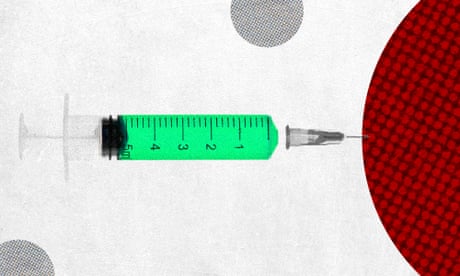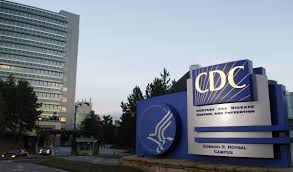The public health officials from all 50 states of the U.S have been instructed by the Center for Disease Control and Prevention to be ready for the distribution of a viable and effective coronavirus vaccine to the mainstream health workers. They have been informed to provide the immunization amongst the health care workers at priority and then to other high risk and vulnerable groups of the society.
Times also stated that the vaccine could be ready as soon as later in October or at the start of November, respectively.

CDC Instructs States To Prepare To Distribute COVID-19 Vaccine
The latest instructions from the center for disease control are a hint of an emerging race to come up with an effective vaccine to eliminate the COVID-19 pandemic that’s killed hundreds of thousands of people globally. The instructional document came the same day when the U.S President said that a vaccine might be available before the end of this year. There must be some hidden link between the two!
Public health officials of each U.S state and territory received three different documents guiding on how to tackle the situation further. The states received these letters were inclusive of New York, Chicago, Philadelphia, Houston, and San Antonio, along with all others, respectively.
In collaborated efforts, they outlined multiple scenarios for the distribution of two possibly effective and potent vaccine candidates to get rid of the deadly virus—each one of them requiring two doses with a week’s gap. The documents state to make provision of these cures in hospitals and other health care facilities at large.

UPDATE September 2, 3:36 PM EDT: Public health experts urge all governmental levels prepare for COVID-19 vaccine
In the previous week, both the officials, inclusive of the head of the Food and Drug Administration and the nation’s lead infectious disease expert has hinted about an upcoming vaccine that will be available for specific groups even before getting done with the clinical trials. The decision on the commencement of distribution is taken after witnessing enough positive results.
Public health officials are of the view that agencies at all state levels should fully-commit to prepare for a vaccine that will take this pain away for good. Whereas, the chances of a November distribution for the vaccine have also raised a debate on the Trump administration pushing the distribution of the vaccine too early without the third phase testing, which in the worse case could resultingly pose a greater danger.
UPDATE September 2, 3:45 PM EDT: Moderna, Pfizer might be behind forthcoming vaccine
The disease control institute will provide in-depth technical specifications of these two vaccine candidates called “Vaccine A” and “Vaccine B,” inclusive of shipping, mixing, administration, and storage requirements, according to Times. As of the news, these specifications sound like the subject vaccines are developed by Moderna and Pfizer; these are the two pharmaceutical companies that have successfully stepped into the late-stage clinical trials. Previously, Pfizer announced that its vaccine is on track and asks for government review to proceed further with the completion in October.
“The timeline of initial deployment is deeply worrisome as it poses a risk for the politicization of public health and potential safety ramifications.” Infection prevention epidemiologist Saskia Popescu made the statement. “It’s hard not to see this as a push for a pre-election vaccine.”

UPDATE September 2, 4:00 PM EDT: Vaccine priority goes to ‘racial and ethnic minority populations,’ national security, essential workers
Official instructions in the three documents stated above note that frontline health care professionals, along with long-term health care employees, will be the first ones to receive the necessary immunization. After which other national security employees and essential workers will be prioritized, said the Times.
The documents stated that the 65 years old or older, including people from “racial and ethnic minority populations,” Native Americans, and citizens under incarceration — each a community at a disproportionately greater risk for contracting the virus and the severe illness that follows — were also listed as primary recipients of the vaccine.
In another statement given to Times, “This is good news because it means it simply doesn’t just all wind up in high-income, influential suburbs.”
UPDATE September 2, 4:12 PM EDT: CDC scenarios assume safety, effectiveness; ‘a bit ambitious’ to health expert
In its guidance, the CDC said, “limited number of COVID-19 vaccine doses may be available by early November 2020,” reports the Times. The new documents were dispatched the same day that CDC Director Robert Redfield sent a letter to governors to prepare vaccine distribution sites by the 1st of November.
The CDC also emphasized that plans for distributing the vaccine were still hypothetical, saying: “The COVID-19 vaccine landscape is evolving and uncertain, and these scenarios may evolve as more information gets available.”
The CDC’s scenarios assume that the subject vaccines might prove sufficiently safe and useful for initial authorization from the FDA before the end of October. In another statement, they believed that 2 million doses of Vaccine A — which seemingly matches Pfizer’s vaccine specifications — would be ready within the said time frame. The agency’s scenarios also said Vaccine B — which probably is Moderna’s vaccine — of which 1 million doses would be released initially, later on, the same vaccine will be produced in abundance for everyone to get immunized.
These vaccines might show some early positive results that will seemingly provide the authorities with encouraging data; however, health experts are still not sure if it’s a good step. “The timeline that’s reported seems a bit ambitious to me,” said Dark. “October’s like 30 days away.”
UPDATE September 2, 4:35 PM EDT: Researchers strongly advise cautious optimism for forthcoming COVID-19 vaccine distribution
Typically, vaccine trials can take years to prove useful. However, that doesn’t mean valid conclusions can’t come far earlier, “There is an overwhelming effect, where vaccinated people show widespread recovery and robust protection from the disease,” a statement from vaccine researcher and immunologist Padmini Pillai of MIT, to the Times.
However, early trial data might not sustain as the months move on; the results might vary at large. Health researchers have asked for time to make sure if the results are positive enough. Lack of research data on the effects of these vaccines might pose a significant societal health risk as the authorities don’t know for now if it is not suitable for patients with a particular underlying disease, and such other exceptions. Research institutes still need more time to test large and diverse populations to conclude thoroughly. The testing also includes vulnerable communities, as traced out in the CDC’s guidelines.
If anything goes wrong, “all of this together could diminish public trust in the vaccine,” said Pillai to the Times.


